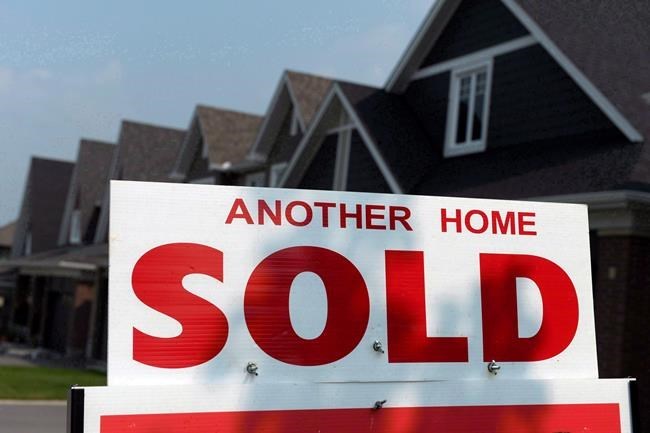MONTREAL ŌĆö TFSAs. RRSPs. And now FHSAs.
The alphabet soup of investment savings accounts for 91įŁ┤┤s looking to buy their first home can seem daunting. Experts say each have their advantages ŌĆö and limits.
The tax-free first home savings account (FHSA), unveiled by the federal government in its budget earlier this month, offers a new way for aspiring owners to make a down payment on their first property.
Available starting next year, it aims to combine the advantages of the existing tax-free savings account (TFSA) and the registered retirement savings plan (RRSP).
Contributions to an FHSA will be tax-deductible, like with an RRSP. Withdrawals from an FHSA, including capital gains, to buy a home will be non-taxable ŌĆö similar to a tax-free savings account.
ŌĆ£ItŌĆÖs almost like a hybrid between the two, but on steroids," said Tim Cestnick, a tax and personal finance expert and CEO of Our Family Office Inc.
First-time homebuyers can tuck away up to $8,000 in that savings account annually ŌĆö unused contribution room cannot be rolled over to the next year ŌĆö with a lifetime cap of $40,000.
"The first home savings account is going to be the better plan for the majority of people," Cestnick said.
In contrast, the RRSP home buyers' plan allows first-time purchasers to funnel no more than $35,000 toward a down payment, and the withdrawal has to be "repaid" within 15 years.
"You really have nothing to lose by setting up one of these first home savings accounts. Either you're going buy a home and you're going to get the benefit of the tax-free withdrawal and the deduction you got when you put the money in ŌĆö and the growth over the years ŌĆö or you're not going to use it and you're going to transfer it to your RRSP tax-free," Cestnick said.
That last allowance also goes the other way, as RRSP holders can transfer cash to the FHSA without being taxed on the withdrawal.
While $40,000 is the maximum contribution for the FHSA, that investment will likely gain value. The account can store everything from stocks and bonds to cash and exchange-traded funds.
Even if that 40 grand doubles in value, however, the bolstered purchasing power still may not be enough to compete in white-hot housing markets like 91įŁ┤┤ or Toronto. Also, given that contributors can only add $8,000 annually, an FHSA would not substantially pad out the pocketbook for several years.
But that might mesh with younger 91įŁ┤┤s who don't plan to leap into the market just yet.
"Somebody who's even 18 or 19 years old who starts a job doing construction or something where they're able to get right into the workforce ... those 91įŁ┤┤s can effectively save more money, because they might still be living with mom and dad, they might be renting low cost," said Leah Zlatkin, a mortgage expert at LowestRates.ca.
The first home account also makes sense for properties that fall far below the average home price in Metro 91įŁ┤┤ or the Greater Toronto Area ŌĆö $1.36 million and $1.30 million respectively in March ŌĆö says Sung Lee, a mortgage expert with Ratesdotca.
"Where home values in general exceed a million dollars, it's going to be tough," he said, noting they require a 20 per cent down payment.
"But for someone who is looking at a property of, let's say, $650,000 or below this would benefit them, because essentially you have to put down five per cent on the first $500,000 ($25,000) and then 10 per cent on the balance ($15,000). So if you take $40,000 ŌĆö the maximum amount that you could contribute into this account ŌĆö that would equate to a purchase price of $650,000."
The FHSA and the RRSP home buyers' plan cannot be used simultaneously, he noted.
For current homeowners looking to size up, neither the FHSA nor the RRSP is applicable. Cestnick says they should consider the more flexible, all-purpose tax-free savings account, which allows annual contributions of up to $6,000, with unused room carrying forward.
An alternate route is renovating the residence to boost its value, especially since gains on the sale are tax-exempt, he noted.
The tax-free savings account can also come into play for those with more than $8,000 to invest, with spillover from that FHSA cap flowing into a TFSA.
"It's a matter of priority. If your longer-term goal is to make sure that I have this nest egg for retirement, you're going to put your extra savings into an RRSP. But if your shorter-term goal is to get into your first home, then you want to take advantage of the new savings account," Lee said.
Would-be buyers should resist any urge to pour money into these tax shelters by taking out debt, Zlatkin noted.
"Maybe you actually want to pay off those credit card bills, try to spend a little bit less on consumer goods and restaurants ... and work out a household budget," she said.
"Then think about houses."
This report by The 91įŁ┤┤ Press was first published April 21, 2022.
Christopher Reynolds, The 91įŁ┤┤ Press


